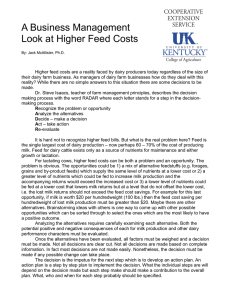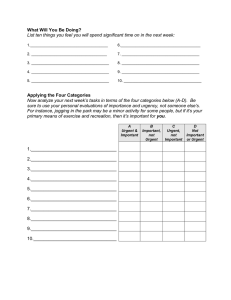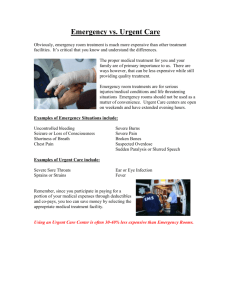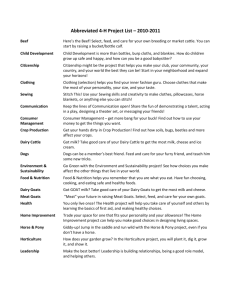Setting Priorities for the Dairy Farm Business
advertisement
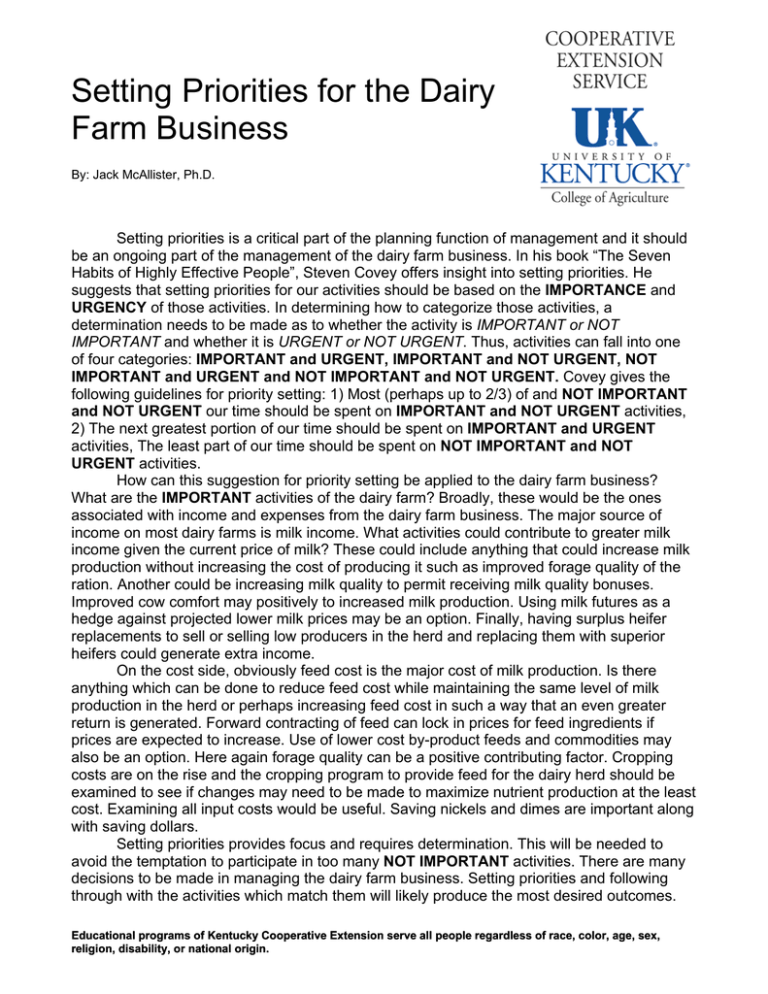
Setting Priorities for the Dairy Farm Business By: Jack McAllister, Ph.D. Setting priorities is a critical part of the planning function of management and it should be an ongoing part of the management of the dairy farm business. In his book “The Seven Habits of Highly Effective People”, Steven Covey offers insight into setting priorities. He suggests that setting priorities for our activities should be based on the IMPORTANCE and URGENCY of those activities. In determining how to categorize those activities, a determination needs to be made as to whether the activity is IMPORTANT or NOT IMPORTANT and whether it is URGENT or NOT URGENT. Thus, activities can fall into one of four categories: IMPORTANT and URGENT, IMPORTANT and NOT URGENT, NOT IMPORTANT and URGENT and NOT IMPORTANT and NOT URGENT. Covey gives the following guidelines for priority setting: 1) Most (perhaps up to 2/3) of and NOT IMPORTANT and NOT URGENT our time should be spent on IMPORTANT and NOT URGENT activities, 2) The next greatest portion of our time should be spent on IMPORTANT and URGENT activities, The least part of our time should be spent on NOT IMPORTANT and NOT URGENT activities. How can this suggestion for priority setting be applied to the dairy farm business? What are the IMPORTANT activities of the dairy farm? Broadly, these would be the ones associated with income and expenses from the dairy farm business. The major source of income on most dairy farms is milk income. What activities could contribute to greater milk income given the current price of milk? These could include anything that could increase milk production without increasing the cost of producing it such as improved forage quality of the ration. Another could be increasing milk quality to permit receiving milk quality bonuses. Improved cow comfort may positively to increased milk production. Using milk futures as a hedge against projected lower milk prices may be an option. Finally, having surplus heifer replacements to sell or selling low producers in the herd and replacing them with superior heifers could generate extra income. On the cost side, obviously feed cost is the major cost of milk production. Is there anything which can be done to reduce feed cost while maintaining the same level of milk production in the herd or perhaps increasing feed cost in such a way that an even greater return is generated. Forward contracting of feed can lock in prices for feed ingredients if prices are expected to increase. Use of lower cost by-product feeds and commodities may also be an option. Here again forage quality can be a positive contributing factor. Cropping costs are on the rise and the cropping program to provide feed for the dairy herd should be examined to see if changes may need to be made to maximize nutrient production at the least cost. Examining all input costs would be useful. Saving nickels and dimes are important along with saving dollars. Setting priorities provides focus and requires determination. This will be needed to avoid the temptation to participate in too many NOT IMPORTANT activities. There are many decisions to be made in managing the dairy farm business. Setting priorities and following through with the activities which match them will likely produce the most desired outcomes. Educational programs of Kentucky Cooperative Extension serve all people regardless of race, color, age, sex, religion, disability, or national origin.
